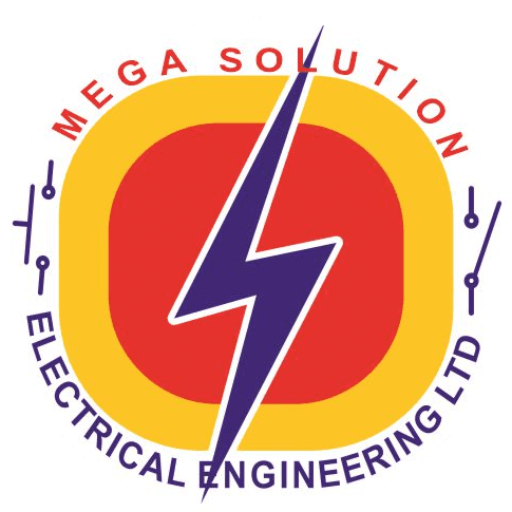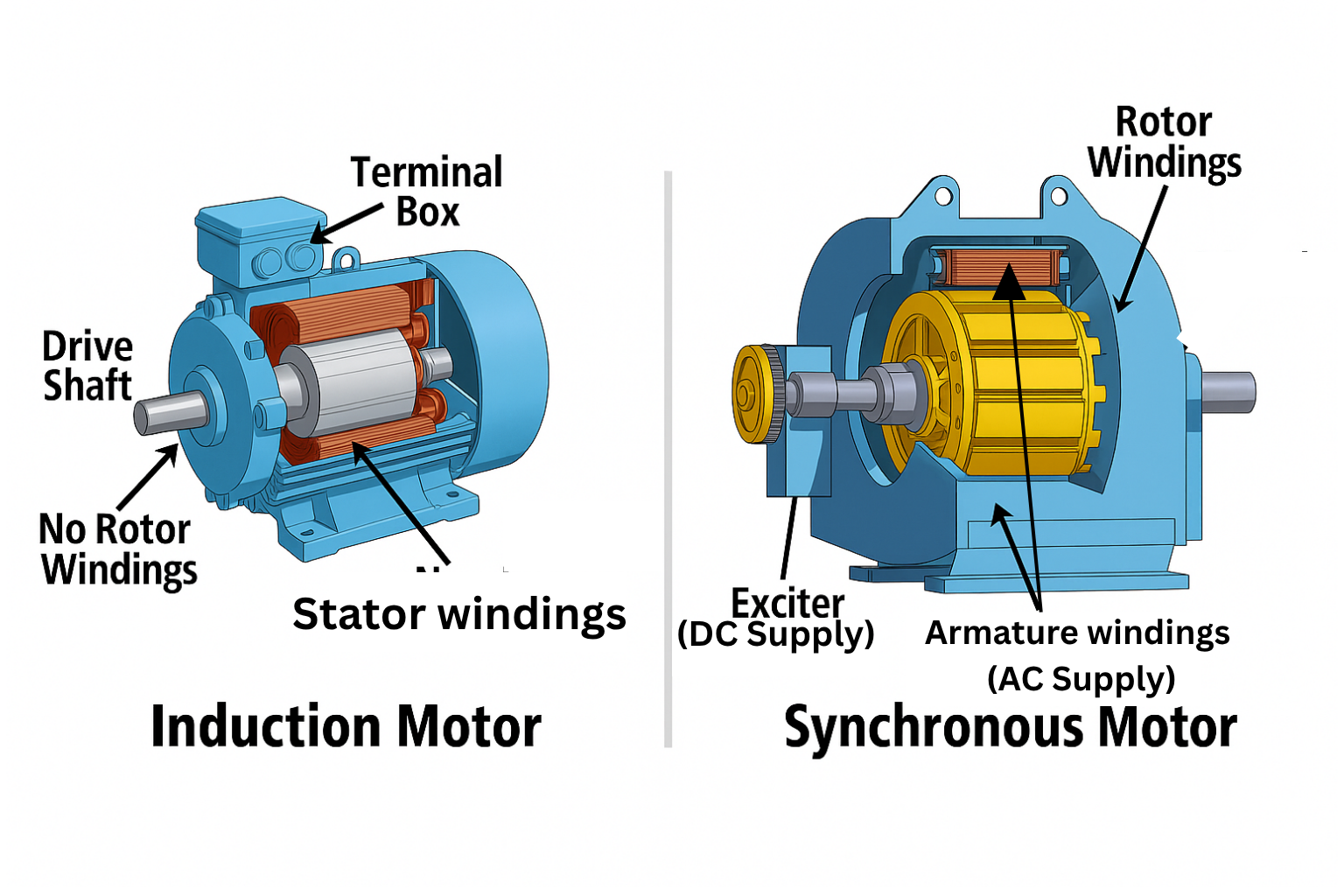Why correct sizing matters?
A solar power system works only when every part matches the power you need. Panels on a roof do not solve anything on their own. Your system includes panels, charge controller, inverter, batteries, cables, breakers, and protection devices. Each one must be properly sized. You size the system based on the appliances you want to run and how long you will use them. You do not size it based on the size of the house. This approach prevents overload, wasted cost, and frequent failures. It also helps you plan future expansion with less risk to your equipment.
Start with an energy audit
Begin with a basic load audit before selecting any component. List every appliance that will run on the solar system. For each appliance, record two things.
- First, its power rating in watts, which is shown on the nameplate.
- Second, the number of hours it runs in a normal day. {Runtime per day}
Multiply the power rating (kW) by the runtime(hrs per day). This gives the daily energy use in watt hours. Repeat this for all appliances. Add the results to find your total daily energy demand. You can keep it in watt hours or convert it to kilowatt hours by dividing by 1000. This becomes your baseline for sizing the system. Without this audit, you will guess and overspend or suffer low performance.
Account for special load types
Some appliances affect sizing more than others. You need to record them carefully before making design choices.
- Starting loads, such as pumps, fridges, and air conditioners, draw a higher current (starting or Surge Current) when switching on. The surge or starting current lasts only a few seconds, but your inverter must be capable of handling it. Check the starting current rating and size the inverter to match.
- “Stand by mode appliances” loads, such as televisions, modems, and phone chargers, use power even when idle. Include standby consumption in your energy audit. It may seem small, but over a full day it adds up.
- Heating loads, such as electric stoves, water heaters, and space heaters, use high power and shorten battery life. They increase panel capacity needs and raise system cost. If possible, move these loads to gas or other alternatives. This will make your solar design more efficient and affordable.
Build a load analysis table
Use a load analysis table to organise your data. It helps you size the system with accuracy. Include these columns.
Serial number. Appliance description. Quantity. Power rating in watts. Total power which is quantity multiplied by power. Daily usage hours. Total daily energy which is total power multiplied by usage hours.
Example
| Appliance | Quantity | Power (W) | Total Power (W) | Daily Use (hours) | Total Energy (Wh) |
|---|
| TV | 2 | 55 | 110 | 3 | 330 |
| Decoder | 1 | 15 | 15 | 3 | 45 |
| Ceiling fan | 3 | 65 | 195 | 7 | 1365 |
| Home theatre | 1 | 45 | 45 | 4 | 180 |
| Security lights | 5 | 10 | 50 | 10 | 500 |
| Indoor lights | 8 | 7 | 56 | 0.5 | 280 |
| Blender | 1 | 250 | 250 | 0.5 | 125 |
| Totals | | | 721 W | | 2,825Wh (2.825 kWh) |
Instantaneous power is 721 W.
Total daily energy demand is 2.825 kWh.
From loads to components: how each number guides sizing
Once the total power and total daily energy are known, you can size each component with accuracy.
- Inverter. Select one that handles the total continuous power, which is now 721 W, and the highest surge from any starting load. Check both continuous and peak ratings on the inverter and choose a model that covers both.
- Solar panels. Use the total daily energy and divide it by usable sun hours and estimated system losses. This gives the PV wattage needed to recharge the batteries each day.
- Charge controller. Choose a unit that matches the PV array voltage and maximum current. MPPT controllers work with higher PV voltages and offer better efficiency than PWM types.
- Cables and protection. Size cables to keep voltage drop low. Select proper DC breakers or fuses according to current levels. Add surge protection devices at suitable points for safety.
- Battery bank. Base the capacity on total daily energy use, inverter losses, preferred depth of discharge, and system voltage. Use these values to determine the required amp hours.
DOD stands for Depth of Discharge.
It measures how much of a battery’s total capacity is used before recharging. For example, if a 100 Ah battery is discharged by 50 Ah, the DOD is 50%.
Batteries last longer if you limit DOD. Lead-acid batteries usually perform best at 50% DOD, while lithium batteries can safely use 80–90% DOD. In solar sizing, DOD helps calculate the total battery capacity needed to supply your daily energy without over-discharging the battery.
Example for battery sizing of solar system
Use these assumptions for a lead acid example, then compare with a common alternative for lithium batteries.
Given
Daily energy demand: 2.825 kWh = 2,825 Wh.
Inverter efficiency: 90% (0.90).
Usable battery DOD (lead acid): 50% (0.50).
System voltage: 24 V.
For Lead acid battery calculation, step by step
Account for inverter losses.
Required from batteries = 2,825 Wh ÷ 0.90 = 3,138.888889 Wh.
Account for battery DOD.
Usable battery capacity needed = 3,138.888889 Wh ÷ 0.50 = 6,277.777778 Wh.
Convert to amp hours at 24 V. (I = W ÷ V)
Battery capacity = 6,277.777778 Wh ÷ 24 V ≈ 261.57 Ah.
Practical choice for lead acid battery
You would select a 24 V battery bank around 260 to 280 Ah. Round up to the nearest standard size to protect the battery and allow margin. For example, choose 24 V, 270 Ah.
Comparison with a standard alternative (lithium battery)
Many designs use lithium batteries with higher usable DOD and better inverter efficiency. Using typical values: inverter efficiency 95% and DOD 80%:
Required from batteries = 2,825 Wh ÷ 0.95 = 2,973.684211 Wh.
Usable battery capacity needed = 2,973.684211 Wh ÷ 0.80 = 3,717.105264 Wh.
Battery capacity at 24 V = 3,717.105264 Wh ÷ 24 V ≈ 154.88 Ah.
Practical choice for lithium battery
You would select a 24 V battery bank around 155 to 170 Ah. Round up to the nearest standard size.
Key differences and standard practice
Standard sizing steps you will see in industry are the same steps shown here. However, designers often add these adjustments.
First, allow 5 to 10 percent for charge controller and wiring losses.
Second, add 10 to 20 percent for temperature and battery ageing.
Third, if you require autonomy for several cloudy days, multiply the daily requirement before applying DOD. These adjustments increase required capacity beyond the basic calculation.
Example for PV sizing
Use these assumptions from earlier: inverter efficiency 90%, peak sun 5 hours, system derate 0.8. Work step by step.
Note: Derate is a factor used to account for real world losses in a solar system. Panels never operate at their full rated power. Several conditions reduce output. Common losses include temperature, dust, shading, wiring resistance, and small voltage drops through the charge controller.
Instead of calculating every loss separately, designers apply a single derate factor. For example, a derate of 0.8 means the system is expected to deliver only 80 percent of its rated output. This helps calculate how much PV wattage you truly need to meet your daily energy demand. Using a derate produces a safer and more reliable design.
Our PV sizing
Daily energy required from batteries and inverter = 2,825 Wh.
Account for inverter losses, required from panels = 2,825 Wh ÷ 0.90 = 3,138.8889 Wh.
Convert to PV wattage using peak sun hours and derate = 3,138.8889 Wh ÷ (5 h × 0.8) = 3,138.8889 ÷ 4 = 784.72 W.
Round to a sensible practical value, for example 785 W of PV. You should choose slightly more to allow margin, so select a PV array from standard modules such as:
• 2 × 400 W panels = 800 W.
• 3 × 270 W panels = 810 W.
• 4 × 200 W panels = 800 W.
These options depend on module availability and roof layout. Use the rounded PV wattage as the baseline for choosing panel count and array configuration.
Charge controller and cable sizing basics
The charge controller must match the maximum current and voltage from the PV array. For an MPPT controller, check that the open circuit voltage of the panel string stays within the controller limit, even at the lowest expected temperature. This prevents shutdown or damage.
For cable sizing, select conductors that keep voltage drop below 3 percent on DC runs. The cable must be rated for the current it carries. The longer the cable, the larger the conductor size needed to maintain efficiency. Install DC breakers or fuses between panels, charge controller, battery, and inverter. These protective devices safeguard the wiring and prevent equipment failure.
Practical rules and common mistakes
- Size the system using real load data, not the size of the building. A large house with efficient appliances may need a small system. A small home with heavy loads may require a larger one.
- Always allow surge capacity. Motors, fridges, and compressors draw a higher current for a few seconds when starting. Your inverter must handle this without tripping.
- Include standby loads. Devices on standby such as routers and chargers keep drawing power throughout the day. Ignoring them leads to shorter battery runtime.
- Plan for losses. Inverter inefficiency, wiring resistance, battery limits, and temperature all reduce usable energy. You must account for these losses when calculating battery and PV capacity. This prevents system failure during peak demand.
Step-by-step checklist to size a system
- Perform a load audit. List each appliance with quantity, watt rating, and daily runtime.
- Calculate total instantaneous power in watts and total daily energy in watt hours or kilowatt hours.
- Choose system voltage and decide the acceptable battery depth of discharge for lead acid or lithium.
- Calculate total PV wattage needed using peak sun hours and system derate.
- Check for special loads such as motors and heating equipment, then increase ratings where necessary.
- Select an inverter that meets both continuous demand and surge requirements.
- Choose a charge controller that matches the array voltage and current.
- Size cables and breakers to reduce voltage drop and protect the equipment.
- Calculate the required battery capacity, allowing for inverter losses and DOD.
Final thoughts
Accurate sizing delivers reliable operation, longer battery life, and better value for your money. The process starts with a clear load analysis. Identify the devices you want to power and measure their energy needs. Use those figures to choose your inverter, battery bank, PV array, and protection devices. This approach prevents guesswork and produces a system that works every day with minimal maintenance.









